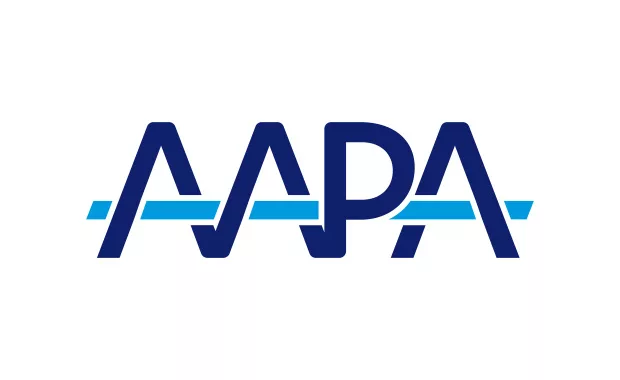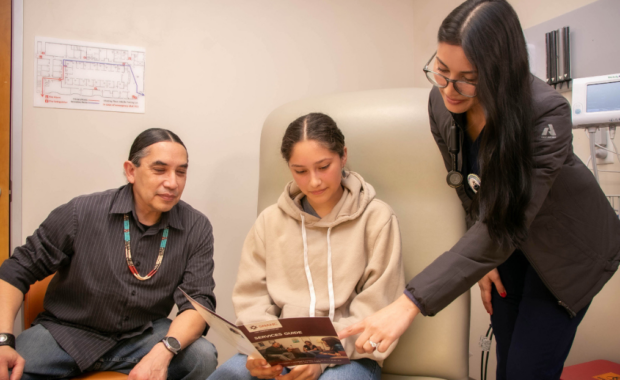A Clinical Case: Evaluation and Disposition of Patients at Risk for COVID-19 Infection
Study Finds Racial Bias in Pulse Oximetry Measurement Disproportionately Affects Black Patients
April 26, 2022
By Kashif Creary MPA, PA-C, and Jonathan Baker, PA-C, MPAS, DFAAPA
Many of our institutionally based COVID-19 protocols, as well as oxygen supplementation guidelines and risk stratification, include criteria based on pulse oximetry to guide safe discharge. Reliable pulse oximetry readings are critical when considering which patients may be safely discharged to non-hospital settings.
A recent study that compared pulse oximetry readings to arterial blood gas (ABG) test results found worrying discrepancies between these two measurements for Black patients. It has also become more evident that African Americans, people of Latin descent, people with underlying conditions1, people with disabilities2, and people in lower socioeconomic statuses who already face preexisting barriers to medical care continue to experience increased chances of infection and poorer outcomes associated with COVID-19.3
COVID-19 Guidelines Leave Room to Discharge Concerning Patients
The June 2021 CDC SARS-COV-2 Transmission-Based Precautions severity guidelines incorporate the use of oxygen level measurements, typically measured by pulse oximetry, to delineate between mild, moderate, severe, and critical illness.
Mild illness is defined as symptomatic with a normal oxygen saturation. Moderate illness is defined as, “individuals who have evidence of lower respiratory disease by clinical assessment or imaging, and a saturation of oxygen (SPO2) ≥ 94% on room air at sea level.” Severe illness is similar to moderate illness with a SpO2 <94 % and a respiratory rate of >30 breaths per minute. Critical illness is defined as respiratory failure, septic shock, or multiple organ failure.
Many patients were discharged with a concerning degree of illness in the early phase of the pandemic. Many patients recovered at home, and some returned to the hospital setting. This experience has only reinforced the fact that concerning patients need close outpatient follow-up. Unfortunately, patients with preexisting health inequalities and decreased access to care, or those enrolled in under-resourced medical facilities, did not and often still do not have the follow-up and support services necessary to surveil a new and complicated illness.
[Stay up to speed with our clinical journal, JAAPA, free with membership]
Pulse Oximetry Measurement Reliability in Diverse Populations
There are concerns regarding the lack of diversity during the development of commonly used medical equipment including the pulse oximeter. Lack of diversity as it pertains to medical equipment may be related to insufficient representation in gender, sex, age, race, ethnicity, and/or expanded ranges of patient weights. 4
The Sjoding et al. published their findings in the New England Journal of Medicine (NEJM) article, “Racial Bias in Pulse Oximetry Measurement.”4 This study analyzed data from the University of Michigan Hospital from January 2020 to July 2020 including 178 Intensive Care Unit (ICU) patients. 10,789 pairs of oxygen saturation readings using pulse oximetry and arterial oxygen saturation in arterial blood gas (ABG) were analyzed from the University of Michigan cohort, which was comprised of 276 patients who self-identified as Black and 1333 patients who self-identified as White. Additionally, a multi-center cohort of 37,308 pairs was also utilized, including samples from 1050 Black patients and 7342 White patients.5 Evaluations were “performed within 10 minutes of each other to ensure that the arterial oxygen saturation was directly measured with co-oximetry.”
In this study, hypoxemia was defined as arterial oxygen saturation of <88% while accounting for factors that could decrease peripheral perfusion. 11.4% of Black patients in the adjusted analysis compared to 3.6% of white patients in the adjusted analysis in the University of Michigan cohort had occult hypoxemia (<88%) on ABG despite pulse oximetry readings of 92% to 96%. The number of patients who may have occult hypoxemia is concerning in both populations, but disproportionately affected those who identify as Black.
These findings reveal how relying on measurements from racially inaccurate medical equipment compounds the structural problems facing underserved populations amidst our ongoing COVID-19 crisis. As previously established, pulse oximetry readings are a key tool in determining if a COVID-19 patient can be safely discharged. Pulse oximetry readings that misrepresent the severity of illness render Black COVID-19 patients doubly vulnerable: Not only may the biased readings result in premature discharge, but Black patients are more likely to face barriers to accessing healthcare resources to successfully recover from COVID-19. 3
Creary Shares Personal Reflections on Study Findings
I have to consider the aforementioned and if discharge inclusion criteria incorporating pulse oximetry readings may contribute to ED bounce-backs and delays in care, especially among racial minorities. Sometimes clinicians discharged patients with no prior significant comorbidities, no prior history of structural lung disease, and/or no history of oxygen dependence who have ambulatory pulse oximetry saturations between 90-94%.
Additionally, these patients are often discharged without supplemental oxygen. Discharge instructions vary by institution and often include strict return precautions and even diagrams regarding proning to advise when return hospital visits are necessary. As we continue to learn about COVID-19, care plans and interventions are still evolving and under debate. We are still studying the progression and long-term consequences of this disease, as well as individual patient factors to improve assessment and treatment plans.
Many PAs participate in quality and safety committees, research divisions, and policy and procedural committees to analyze various aspects of our practice. As we review retrospective studies and their limitations and construct prospective studies more representative of the general population, I hope that we yield improved data to better understand how to serve all our populations. I also hope we can continue to focus on opportunities and resources to improve all aspects of care, especially for patients with significant gaps in service.
Jonathan Baker, PA-C, MPAS, DFAAPA, is past president of AAPA’s LGBT PA Caucus and current president of the NYSSPA. Baker also serves as AAPA’s Liaison to the GLMA.
Kashif Creary, PA-C, MPA, SAFE is currently the assistant director of PA Services. PA Creary also serves as the chairperson for the NYSSPA Diversity, Equity and Inclusion Committee. PA Creary also worked for the private and public sector but spent many years working in Queens Health Network, where she gained a greater appreciation for working in underserved communities; implementing solutions to improve patient care, quality, and safety; and caring for survivors of sexual violence.
You May Also Like
Learn How Implicit and Overt Bias Impact How You Practice
Barriers to Care: Four PAs Talk About Serving Rural Communities During the Pandemic
Health Inequities: How PAs Can Help Bridge the Care Gap
Diversity, Equity, and Inclusion Resource Center
References
- https://www.cdc.gov/coronavirus/2019-ncov/hcp/clinical-care/underlyingconditions.html
- https://www.cdc.gov/ncbddd/humandevelopment/covid-19/people-with-disabilities.html
- https://www.cdc.gov/coronavirus/2019-ncov/community/health-equity/race-ethnicity.html
- https://www.nejm.org/doi/full/10.1056/NEJMc2029240
- https://www.nature.com/articles/sdata2018178
Thank you for reading AAPA’s News Central
You have 2 articles left this month. Create a free account to read more stories, or become a member for more access to exclusive benefits! Already have an account? Log in.



